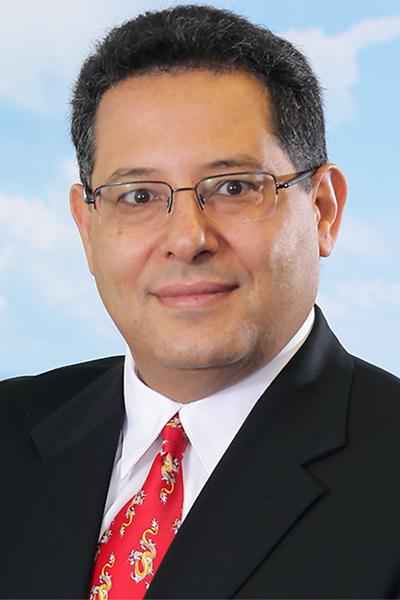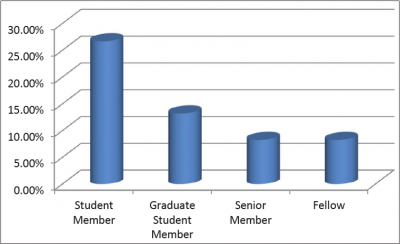Diversity and Inclusion


Nobody knows better than communications engineers that diversity is an asset. More diverse companies are known to be more profitable, as the 2018 study of 1,000 companies across 12 countries performed by McKinsey found regarding gender diversity1. Other studies show that companies whose employees are diverse are more likely to report a growth in market share over the previous year2. However, women are much more likely to quit the tech industry than men (41 percent vs. 17 percent). A study of 4,000 women who had recently changed jobs found that the main reason women leave companies is because they perceive a lack of advancement opportunity3.
The IEEE Communications Society (ComSoc) is the world’s leading organization for communications professionals whose aim is to promote technological innovation and foster the creation and sharing of information among the global technical community. The Society also aims at providing services to members for their technical and professional advancement and forums for technical exchanges among professionals in academia, industry, and public institutions.
To achieve its mission, it is of the utmost importance that the Society continues to promote diversity in gender, geography, etc. Over the past two years and during our Presidential term, this has been one of our goals. In particular, we took a proactive role in diversity and many actions were taken.
In this months’ President Page, we address the gender diversity issue and present some of our activities and initiatives to promote diversity in general within ComSoc. The page is shared with Ana García Armada, the chair of our Women In Communications Engineering Standing Committee (WICE).
Ana received the Ph.D. degree in electrical engineering from the Polytechnical University of Madrid in February 1998. She is currently a Professor and leads the Communications Research Group at the University Carlos III of Madrid, Spain, where she has occupied a variety of management positions (Head of the Signal Theory and Communications Department, Vice-Dean of Electrical Engineering, and Deputy Vice-Chancellor of International Relations, among others). She has been a visiting scholar at Stanford University, Bell Labs and the University of Southampton. She has participated (and coordinated most of them) in more than 30 national and 10 international research projects as well as 20 contracts with the industry, all of them related to wireless communications. She is the co-author of eight book chapters on wireless communications and signal processing. She has published around 150 papers in international journals and conference proceedings and she holds four patents. She has contributed to international standards organizations such as ITU and ETSI, is member of the expert group of the European 5G PPP and a member of the advisory committee 5JAC of the ESA as an expert appointed by Spain on 5G. She has served on the editorial boards of Physical Communication (2008-2017) and IET Communications (2014- 2017). She has served on the editorial board of IEEE Communications Letters since 2016 (Exemplary Editor Award 2017 and 2018, Area Editor from September 2019) and IEEE Transactions on Communications since 2019. She has served on the TPC of more than 40 conferences and she has been/is part of the organizing committee of IEEE Globecom 2019 and 2021 (General Chair), IEEE Vehicular Technology Conference Fall 2018, IEEE Vehicular Technology Conference Spring 2018 and 2019, IEEE 5G Summit 2017, and European Conference on Networks and Communications (EuCNC) 2015, among others. She was the Newsletter Editor of the IEEE ComSoc Signal Processing and Consumer Electronics Committee (2017-2018) and is now the Secretary of this committee (since 2019). She was Secretary of the IEEE ComSoc Women in Communications Engineering Standing Committee (2016-2017) and is now the Chair of this committee (since 2018). She has received the Young Researchers Excellence Award, the Award to Outstanding achievement in research, teaching and management, and the Award for Best Practices in Teaching, all from the University Carlos III of Madrid. She was awarded the third place Bell Labs Prize in 2014 for shaping the future of information and communications technology.
A study conducted by the IEEE in 2017 shows that female IEEE members say they face significant discrimination in the workplace, including demeaning comments, inappropriate job-interview questions, and exclusion from networking events and important business meetings. Nearly 60 percent of the surveyed 4,500 women IEEE members said they did not think men and women working in technology fields are treated equally4.
At IEEE, women members are not achieving the same visibility as men. The percentage of women among the nominees for IEEE elevation to Fellow, IEEE Medals and recognitions and Technical Field Awards is well below 8 percent (Figure 1). Meanwhile, visibility has been identified as the most critical factor for getting promoted to a high level according to a study conducted by Stanford Professors5

Figure 1: Percentage of women in nominations to Fellow, medals, and recognitions
and Technical Field Awards in IEEE.
Based on the suggestions of the respondents to the IEEE survey as well as other concerns, the IEEE Board of Directors approved last February the formation of an ad hoc committee on diversity, inclusion, and professional ethics. Andrea Goldsmith, from Stanford University and a long time ComSoc volunteer, was appointed chair of the committee.
Within ComSoc the situation is not different from IEEE in general. The percentage of women among the members of ComSoc decreases drastically from Student Members to Fellows, as can be seen in Figure 2, with membership data of October 2019. We still see in our flagship conferences, such as at the IEEE International Conference on Communications (ICC) 2019, that none of the keynote speakers was a woman.

Figure 2: Percentage of women in ComSoc according to membership grade.
To address this problem, many initiatives were undertaken over the past two years. These include the approval of two motions at our Board of Governors (BoG) meeting in Kansas City in May 2018 to affi rm ComSoc’s commitment to: 1) an environment free of discrimination and harassment; and 2) the promotion of diversity within ComSoc and tracking of statistics within ComSoc on gender/region/professional sector relative to awards and honors, conferences, etc. Additional motions were approved by our BoG in May 2019 to guarantee that the appointment and nomination for ComSoc positions cannot proceed without eff orts that demonstrate that diversity was taken into consideration.
WICE Initiatives to Promote Women in Communications Engineering
The Women in Communications Engineering Standing Committee (WICE) is an important committee that reports directly to BoG and whose aim is to promote the visibility and roles of women communications engineers, as well as provide a venue for their professional growth.
WICE aims to provide venues where women in ComSoc can widen their networks and find mentoring and advice, in particular for the young members to continue pursuing a Communications Engineering career. It is also very important to show data and statistics since recognizing a problem is the first step toward its solution, and to share best practices to increase diversity in our institutions. We do this in small-sized events such as panels, as well as in one-day workshops, usually organized at conferences sponsored by ComSoc. At Globecom 2019 for the first time we are going to offer some training on negotiation skills that we believe will be very useful, and not only for the young female ComSoc members. We hope that this will be a great experience that will be continued afterwards.
It is important to mention that our activities are not just for women. We target all ComSoc members and especially those belonging to any under-represented group.
Since Globecom 2016, we have a Child Care program at each ICC and Globecom to help families who are bringing small children to the conference or who incur extra expenses in leaving their children at home. Even though the program has been helpful, we need to improve it by making it more usable, since often the families do not fi nd the services to contract in the conference venue and a reimbursing approach does not help.
Aiming at increased women’s visibility, WICE offers yearly awards to recognize members of ComSoc who have been involved with WICE and have done outstanding technical work in the broad field of Communications Engineering, provided exceptional leadership within WICE, or made a strong commitment to mentoring WICE members. Often we hear from some of our male colleagues that they do not find women to appoint for several roles with visibility, including committees or keynotes. In WICE, we are very glad to help provide excellent candidates to be appointed to such roles.
What is Next?
Today we have more than 4,000 members in our mailing list and we are proud to reach a large number of ComSoc members who share our concerns and interests about improving diversity. Now we would like to increase the number of people who are actively involved and increase geographic diversity, not only gender, also targeting regions where our help may be even more needed.
Stay tuned for our activities6 and we hope to see you at our WICE workshop at Globecom 2019!

Figure 3. Group picture of the attendees to the WICE event at ICC 2019.
Footnotes
- https://www.mckinsey.com/business-functions/organization/our-insights/delivering-through-diversity
- https://hbr.org/2013/12/how-diversity-can-drive-innovation
- https://medium.com/tech-diversity-files/the-real-reason-women-quit-tech-andhow-to-address-it-6dfb606929fd
- https://spectrum.ieee.org/the-institute/ieee-news/ieee-survey-fi nds-that-femaletechnologists-face-unequal-treatment-and-sexist-workplaces
- https://hbr.org/2016/09/to-succeed-in-tech-women-need-more-visibility
- https://wice.committees.comsoc.org/


